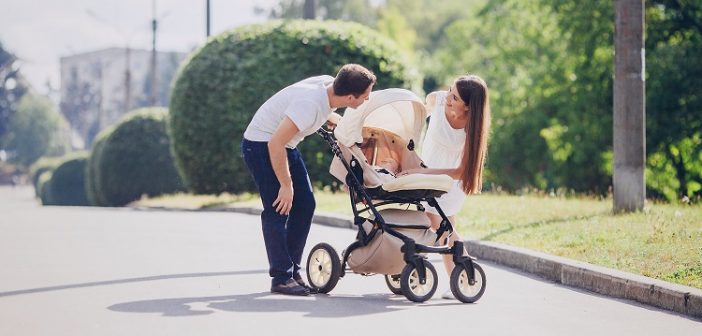Before you start looking for the best humidifier for baby, are you confident with the information that you’ve gathered? We are sure that you have already opened multiple tabs to prepare yourself. Perhaps you’ve also created a criterion on how to choose a unit.
But before you put a humidifier in your cart (virtually or literally)…
Should You Get a Humidifier for Your Baby?
Humidifiers are fantastic for raising up the moisture level of the air. The relevance of air moisture roots from the detrimental effects of dry air. As you can assume, dry air dries up the skin and nasal passages. And sadly, babies are already predisposed to certain symptoms related to these effects.
Itchy, dry skin from eczema and congestion from colds are common in babies. And if they are exposed in dry air, it can worsen these effects. Of course, we hate seeing our little ones suffer. We have experienced these symptoms before, but a smaller, more fragile baby doesn’t understand why they suddenly feel uncomfortable.
If your baby suffers from these conditions, chances are it’s the same reason why you’re getting a humidifier. However, you can still get a humidifier even if your baby is visibly healthy. Humidifiers make breathing easier, and at the same time, help for a good night’s sleep. They produce white noise, and some models even cater to nurseries by having a night light.
And after you got your go signal from your baby’s pediatrician, the next step is to educate yourself with each humidifier types.
Types of Humidifiers
Cool Mist vs Warm Mist Humidifiers
The names of these humidifiers give away their main difference, which is the temperature of the mist they emit. Cool mist humidifiers emit cool mist, and warm mist humidifiers emit warm mist. Evaporative cool mist humidifiers, in particular, express more sound compared to warm mist humidifiers. Ultrasonic cool mist humidifiers, on the other hand, are notorious for producing white dust if you happen to use hard water.
However, warm mist humidifiers also have their disadvantages. The warm moisture they emit is from the steam of their boiling water. They use a heating element to boil the water themselves. Consequently, they pose a scalding risk. They will also consume more electricity compared to cool mist humidifiers.
Now that we have mentioned their disadvantages over each other, let’s talk about their benefits. Of course, cool mist humidifiers pose no burn hazards. They also consume less electricity, and they come in a variety of designs fit for every nursery.
With warm mist humidifiers, since the mist they emit is from boiled water, you know that it is sanitized. You can feel more at ease, knowing that your baby is not breathing any potential contaminants from the reservoir. The added warmth can also be advantageous for winter months in exchange for the dryness from a heater.
Both types of humidifiers perform at the same level when it comes to humidifying a room. How you choose will base on which cons are more significant for you. We should also mention that some models of warm mist humidifiers allow usage with medicated vapors. And cool mist humidifiers, on the other hand, allow the addition of essential oil depending on the unit.
Ultrasonic vs Evaporative Humidifiers
There are two types of cool mist humidifiers. The more “advanced” per se among them is the ultrasonic humidifier. It utilizes a vibrating plate inside which in turn breaks the water into very tiny particles. However, you must stick with using distilled water if you don’t want mineral build-up in your tank.
The tap in some areas might have a high mineral content. These minerals can accumulate in the tank, giving you an extra work to do. The humidifier can also potentially emit them in the air and form a by-product called white dust. More than being an added chore, white dust can be problematic if your baby has asthma or allergies.
What about evaporative humidifiers? Evaporative humidifiers use a fan and a wicking filter. You can think of them as the most traditional way of adding moisture to the air. The filter also helps for a cleaner mist. However, the fan adds to the overall noise of the unit, and the filter will eventually need replacing.
When to Use a Humidifier for Your Baby
Relief of Congestion and Other Respiratory Symptoms
As we have mentioned earlier, the most popular use of baby humidifiers is to relieve congestion. Humidifiers help in the expulsion of mucus in the passages by thinning it out. To help you understand it better, humidifiers contradict the possible worsening effects of dry air on respiratory problems.
Prevent Dry Skin
Babies lose skin moisture more easily than us. Therefore, dry environment can cause their skin to flake, which can be itchy and irritating. In fact, one of the common triggers of baby eczema is dry air. It can also make the condition itchier, causing irritation on the rashes.
During winter, the air is drier and adding a heater exaggerates the loss of air moisture. You can opt for a warm mist humidifier instead. Not only does it consumes less energy, but it also does not suck the air dry.
For Comfortable Sleep
Every parent loves watching their little one sleep peacefully. However, if they are already experiencing certain symptoms, it might take them longer to doze off. By adding a humidifier, you can alleviate the uncomfortable symptoms that we’ve mentioned earlier.
And as a bonus, the subtle noise of the machine also acts as white noise for a more relaxing experience. You can also take advantage of certain features such as night light and diffuser to level up the room’s ambiance.
Risks of Using a Baby Humidifier
Contaminated Reservoir
Humidifiers have stagnant water in their tank. And as you can assume, this water can potentially become a breeding ground for bacteria and mold. The mist that humidifiers emit comes from this water, which means you run the risk of exposing your baby to contaminated air.
However, you can avoid this problem by regularly cleaning your tank. Schedule a deep cleaning once a week and comply with the manufacturer’s directions for maintenance. You can also choose units with larger tank openings so you can reach every corner easily. Some manufacturers even come up with dishwasher safe parts for an easier and more efficient clean-up.
White Dust
As we have briefly discussed earlier, cool mist humidifiers must always use distilled water. And the reason for this is because the tap water in some areas has a high mineral content. These minerals can accumulate in the tank, which can be a drag to scrub off.
Another risk from these minerals is their by-product called white dust. Ultrasonic cool mist humidifiers can emit the minerals as well, and leave “white dust” on various surfaces. It adds to the overall chore of a busy parent. And if your baby has existing respiratory conditions or allergies, inhaling these particles might trigger or worsen it.
Burns
Most parents would overlook warm mist humidifiers because of their heating element. The warm steam and the boiling water inside can cause burning accidents, especially on curious children. It would be better to place your unit out of sight and out of reach of your child. And this tip is also applicable on any type of humidifier.
Overall, these risks are avoidable. At the end of the day, a humidifier will only work best if you use it with caution. Remember to use a humidistat to regulate its output and a hygrometer to measure the nursery’s humidity level. You should also talk to your baby’s doctor to be sure about your baby’s possible reaction to its effects.





Once you participate in a McDVoice survey by sharing your views and experience, one will be rewarded with coupons or vouchers. The objective of conducting these researches is to know the customer’s satisfaction level.
I think cool mist vs. warm mist is more dependent on the season. Also if your baby has allergies, it’s suggested that you use a cool mist humidifier.
Warm mist humidifiers are ideal for winter, when air can be super dry.